The season of indulgence is upon us, but for many British households, the focus this year will be on keeping warm and saving money
For consumers and grocers alike, it’s going to be a tough Christmas. According to the Office for National Statistics (ONS), grocery inflation is now over 16%, the highest in 45 years. More than a quarter of UK households class themselves as ‘struggling’.
Against this backdrop, many shoppers are planning to cut back on the usual luxuries associated with the festive period, prioritising essentials such as staying warm and dodging hunger.
Around 66% of people surveyed by The Grocer in October say they are planning to spend less on food and drink this Christmas. A Channel Factory poll had similar findings, showing 39% plan to reduce spend on Christmas activities and entertainment, and 44% are set to cut back on festive food and drink.
“Consumers are entering the festive season with budgets under more pressure this year, and it is not surprising almost all are considering affordability and adapting their typical Christmas spending habits in one way or another,” says Oliver Vernon-Harcourt, head of retail at Deloitte. “The economic circumstance in which we enter the period has, perhaps inadvertently, fostered a spirit of thrift amongst some consumers who are looking to save money on celebrations.”
So what does Christmas in a cost of living crisis look like? As Matthieu Barral, Checkout.com’s head of sales puts it: “The only thing that’s certain during this festive retail season is it’s going to be very different to what retailers and consumers are used to.”
That’s echoed by Cathy Evans, MD of Reapp. “We’re having to look far further back than usual because the trends are going to be so different,” she reports.
While nothing is certain, one likely casualty will be hospitality, as a growing number of people opt to dine in. That continues a trend that began in the pandemic. According to a Shopmium survey, over a third (37%) of households started cooking from scratch more during lockdowns and almost all are still doing it regularly.
“It’s one of only a few trends that has still stuck,” says Stuart Sankey, head of Shopmium UK. “This suggests households are much better equipped to be creative this Christmas and combine savvy purchasing with more honed cooking and food preparation skills.”
21% of Brits expect to spend £250 on food and drink over the Christmas period, which is more than the 15% in 2021
Source: Spark Emotions
The survey found 94% of UK consumers planned to eat and drink out less than once per week or not at all over the next few months. “Instead, we’re seeing a rise in households planning a ‘big night in’ to replace experiences previously had out of home,” Sankey adds.
Of those still heading out, an Ipsos poll found just under half (48%) of Brits said they would be likely to spend less on Christmas trips and Christmas parties.
The drop-off in boozy pub visits will likely vary by socioeconomic group. “Alcohol generally has fewer struggling shoppers, as we know the most financially constrained already have a smaller category repertoire consisting of essentials,” says Emily Swann, principal consultant at Kantar Worldpanel.
“It’s the more comfortable shoppers we need to watch, as they have more room to move and much more engagement and involvement in the out of home space. If wallets are tighter, we may expect people to be trading out of on-trade occasions such as dinner in a pub into replicating those in the home, which may result in more in-home alcohol occasions.”
18% of people cooking Christmas dinner this year will be using an air fryer to cook instead of using the hob or oven to save money
Source: Spark Emotions
This is likely to have a multifaceted impact on grocery spend. In the case of alcohol, many shoppers will “trade up and treat themselves”, according to Tom Smith, marketing director Europe at Accolade Wines.
“However, budgets will be squeezed this year as a result of cost of living pressures. Overall, we are expecting shoppers to behave in different ways, to switch down to cheaper products or to reduce frequency and basket size. But we think where people can, they will try and make Christmas special – especially after months of limited spending,” he says.
Against this backdrop, promotions and strong EDLP strategies will be crucial in grocery, says Katie Thomas, lead at Kearney Consumer Institute. “Last year, many retailers discounted fewer products due to supply chain issues. This year, they are discounting more in order to both clear excess inventory and demonstrate they understand the cost of living predicament that consumers find themselves in,” she says.

“Consumers will be feeling the pressure of rising energy bills and food prices, and grocers will likely find that discounts are a strong source of attraction.”
Shoppers are increasingly savvy about comparing prices across retailers, she adds. Indeed, a Shopmium survey in October found 79% of shoppers are paying more attention to promotions, and half cited them as the number one reason they would buy a product.
“Value perception is becoming the primary driver in selecting one product over another, far surpassing the importance of how healthy or environmentally-friendly an item is,” says Sankey.
“Shoppers need to feel supported by brands, so demonstrating value through creative merchandising, bundle deals or offering promotions and discounts on key Christmas items will go some way towards helping households,” he adds.
1/3 of UK adults plan to spend less on Christmas gifts this year compared to last year
Source: Spark Emotions
For brands, those deals could prove key to retaining shopper loyalty. Shopmium’s survey found 64% of shoppers were switching to cheaper brands and 58% to supermarket own-label goods as the cost of living crisis takes hold.
Retailers are in a similar situation. The same survey found more than half (55%) of consumers have changed supermarkets to a lower-cost retailer in the run-up to Christmas.
As summed up by Reapp’s Evans: “People will still buy as much food, but more people will include an Aldi or Lidl shop whereas traditionally they’d tend to include a Sainsbury’s, Waitrose or M&S shop.”
World Cup
Amid all these considerations, there is one elephant in the room: the World Cup. The tournament has never before taken place so close to Christmas, with the final due on December 18. The impact is tricky to forecast.
“It depends on how long England and Wales stay in the competition for,” says Evans. “And when you couple that with two years of Covid data, which has impacted last year’s and the year before’s trends, it’s a really complex marketplace at the moment.
“The football finishing just before Christmas makes it a real challenge for retailers to hold the right stock,” she adds.
Overall, a grocery buying boost is anticipated. Food and drink is expected to account for £1bn of total retail sales driven by the tournament, according to vouchercodes.co.uk analysis. That’s significantly less than the 2018 competition, but still a sizeable sum.
“Many more folks are likely to watch football as nuclear units or in more extended gatherings at home for this World Cup,” says Clive Black, head of research at Shore Capital.
“Whilst difficult to model, we would expect a step-up in off-trade beverage sales around big matches as well as party and gathering food – so snacks, pizza, chicken thighs/wings, big pot dishes like chili con carne, party bread and so forth. And then there is booze.”
As Black puts it: “Ahead of a Christmas build-up, the logistics divisions of the major supermarkets and their respective supply chains can expect a right old time.”
That is nonetheless a positive outlook – especially as other sectors, like gifting, are likely to have the opposite problem.
26% of Brits have ‘high concerns’ about the cost of Christmas, according to a November poll – but this is fewer than the 46% in May
Source: Spark Emotions
In the UK, spend on online sales events Black Friday and Cyber Monday is expected to drop significantly this year: from £6bn in 2020 and £4.8bn in 2021 to just £3.9bn, according to Finder. The average spend per participating person will also fall by £85 this month to £189.59.
That spend will likely be focused around deals. The number of Brits who plan to shop in the sales has risen by 6% from last year to 39% this year, Finder says. And those shoppers are more clued up than ever on prices.
“I think consumer confidence in the integrity of Black Friday deals has become somewhat weaker,” says Simon Binge, commerce senior manager for customer transformation at Capgemini. “There’s significant evidence that shows how products featured in Black Friday sales can often be found cheaper at other times of the year. It’ll be up to retailers to win back consumer trust and prove the value of their deals.”
While cold weather clothing and gifts are time-sensitive, consumers may hold out beyond Christmas for other purchases. “If Black Friday and Christmas sales are soft, it stands to reason that January’s sales will show deeper discounts. Whether consumers are willing to hold out that long will likely depend on their purchase occasion and product category,” Binge adds.
Secondhand could well be a growing trend. One in 10 consumers in a Deloitte survey reported they were looking to buy gifts secondhand or via reselling platforms. Two in five said they were either seeking sale or discounted items, and another two in five were planning to switch to cheaper brands or stores. One in 10 consumers plan to forgo buying gifts altogether.
“Ongoing rising costs have seen consumer spending habits shift for a prolonged time, with non-essential items often the first to go,” says Vernon-Harcourt at Deloitte. “Unfortunately, it appears that this cost-cutting will also be reflected in some aspects of Christmas celebrations as some consumers will forgo gift-giving altogether. Whilst this will be a difficult financial decision for some, others will have reprioritised what the festive period means to them, following a number of Covid-impacted Christmases.”
However, he adds, for many – especially those with families – it is expected “the tradition of gifting at Christmas will prevail”.
As will the traditional family Christmas dinner – just with a savvier eye on exactly what all the trimmings cost.
Santa’s crisis picks

The Snuddie
Sales of Primark’s trending snuggly oversized hoodie-cum-blanket – which the retailer claims “will literally change your life” – have more than doubled versus last year. “Consumers are leaving their central heating off and buying cold weather products to compensate,” said Primark owner Associated British Foods CEO George Weston.
Air fryer

Searches for double-drawer air fryers have increased by 300% over the last three months, according to Idealo. The average price has followed suit, up by 55% in the last six months to £233. But that could easily be made back within a year in energy savings versus an electric oven, according to research by Utilita.
“I’d expect that this year’s Christmas shop for many households will be influenced greatly by the air fryer trend, and foods that can be prepared in the energy-saving appliance,” said Idealo brand manager Katy Phillips.

Squishmallows
While gifting is expected to be more limited this year, most young ones will still be hoping to get a little something under the tree.
Many predict the hit toy for 2022 to be Squishmallows. With a marshmallow-like stuffing and super-soft plush outer layer, they can be used as pals, pillows and even fidget objects. They come in a range of sizes and 800 characters.
Christmas in a crisis: how shoppers are adapting festive habits to save money
- 1
 Currently reading
Currently readingChristmas in a crisis: how shoppers are adapting festive habits to save money
- 2




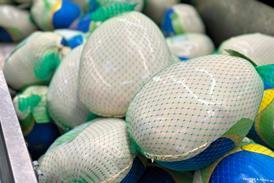







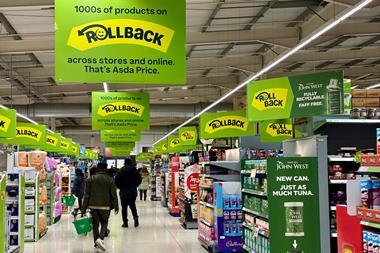
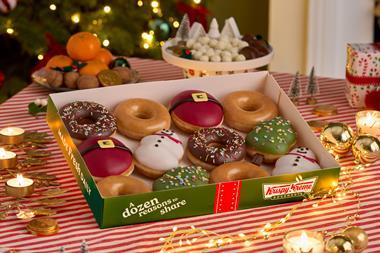
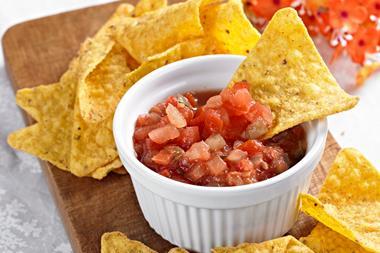


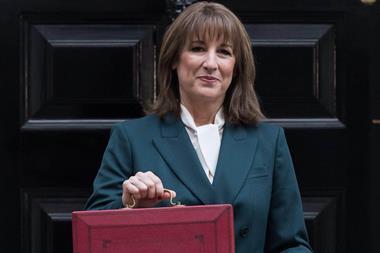
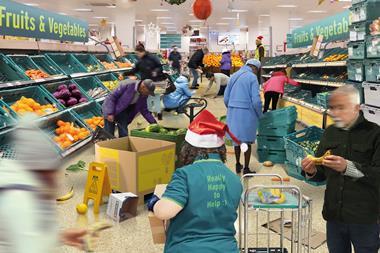
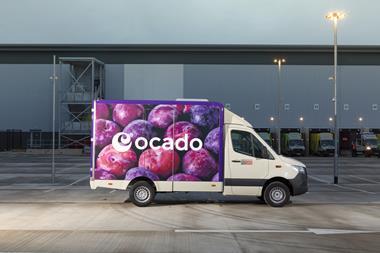

No comments yet